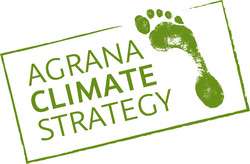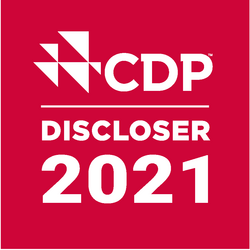Scope 1+2: 50% reduction by 20230|31
Under the science-based targets submitted, AGRANA commits to reducing emissions from its production operations (Scope 1 and 2) by 50% by 2030|31 (relative to the base year 2019|20) and lowering emissions from the upstream and downstream value chain (Scope 3) by about 34% over the same period. The company’s long-term goal is to be able to report net-zero emissions in its own production activities (Scope 1 and 2) by 2040 and net-zero emissions across the entire value chain by 2050 at the latest.
Implementing the existing climate protection plan for the Group’s own production operations, which targets a greenhouse gas emission reduction in AGRANA's manufacturing (Scope 1 and 2) of 50% compared to the base year 2019|20 for the first stage up to 2030|31, the following measures were taken in the 2022|23 financial year:
- Implementation of a package of measures for switching to electricity from renewable sources, which started with the purchase of external green electricity in Austria in the 2020|21 financial year and is being rolled out incrementally in other countries, as well as being complemented by the installation of photovoltaic systems on the company’s own production buildings
- Phase-out of coal as an energy source at the AGRANA Group’s last remaining coal-fired production site, in Opava, Czech Republic, by 2025|26 at the latest
- Ongoing energy efficiency measures in all business segments
AGRANA follows the principle of complete raw material utilisation to make core products and by-products (the latter being mainly animal feed and fertilisers). In the second stage from 2026|27 onwards, energy recovery from low-protein raw material residues could be added to the existing direct material use in order to continue to utilise all raw material components not just completely, but also optimally in terms of climate protection. At AGRANA’s Hungarian sugar factory in Kaposvár, beet pulp and other beet residues have already been used for biogas production for several years. However, as the biomass utilisation for energy recovery cuts into feedstuff revenue, the right business conditions are required for it to be implemented economically. What is urgently needed in order to achieve the transformation to a low-emission society and facilitate companies’ investment decisions to this end is a comprehensive emissions trading system that transparently reveals the CO2 footprint of every consumer decision in the areas of food, housing, mobility and leisure behaviour and allows carbon-intensive lifestyles to be identified by their higher costs. In total, based on current assumptions, AGRANA would have to invest about € 470 million by 2040 to avoid the greenhouse gas emissions (Scope 1 and 2) generated in its production operations during the processing of raw materials used; the specific projects included in this value are limited to those contained in the Group’s internal five-year plan, while projects and cost estimates included beyond the five-year time horizon are to date based only on modelling.
Scope 3: Emission reduction in the up- and downstream value chain
At about 78%, the main contribution to the Scope 3 portion of the AGRANA Group’s corporate carbon footprint comes from the production of the agricultural raw materials processed by the company. Reducing emissions generated in agricultural production is thus the focus for AGRANA’s efforts to cut Scope 3 emissions.
In 2022|23, measures were therefore developed in several expert workshops on how and to what extent greenhouse gas emissions can be reduced “in the field”. Important approaches are, for example, the creation of greater transparency in the procurement of raw materials, especially from overseas, in order to reduce emissions from land use changes (by, among other things, ensuring freedom from deforestation); the use of emission-reduced fertilisers in crop production; and the introduction of regenerative agricultural practices at suppliers. The reduction of emissions or, more specifically, the achievement of net-zero emissions in agriculture, will depend to a large extent on the – thus far lacking – scientific guidance and regulatory specifications for carbon storage/sequestration in agriculture (carbon farming).
In the course of these workshops, a closer analysis of the emission factors for agricultural raw materials used in the calculation of the corporate carbon footprint, taken from international databases, revealed that the composition of these factors often does not correspond to the agricultural practices of the Group’s raw material suppliers assumed by AGRANA experts. For this reason, a project was launched in 2022|23 to collect primary data for the most important raw materials in the individual business segments in order to calculate AGRANA-specific emission factors. These primary data are gathered from growers of sugar beet, starch potatoes and corn (maize) in Austria, of apples in Hungary and of strawberries in Mexico. This is an initial pilot project with the medium-term goal of finding an easy-to-use, software-based solution that allows farmers to quickly and straightforwardly collect data that will enable them and AGRANA to calculate their own, crop-specific emission factors.
CDP disclosure 2022
AGRANA has been publishing its greenhouse gas emission data as part of the Carbon Disclosure Project (CDP) since 2021. The global non-profit organization CDP is the world's leading platform for the disclosure of environmental data by companies, governments and municipalities. Over 13,000 companies with over 64% of global market capitalization disclosed environmental data through CDP in 2021. This is in addition to the over 1,100 cities, states and regions who disclosed, making CDP’s platform one of the richest sources of information globally on how companies and governments are driving environmental change.

